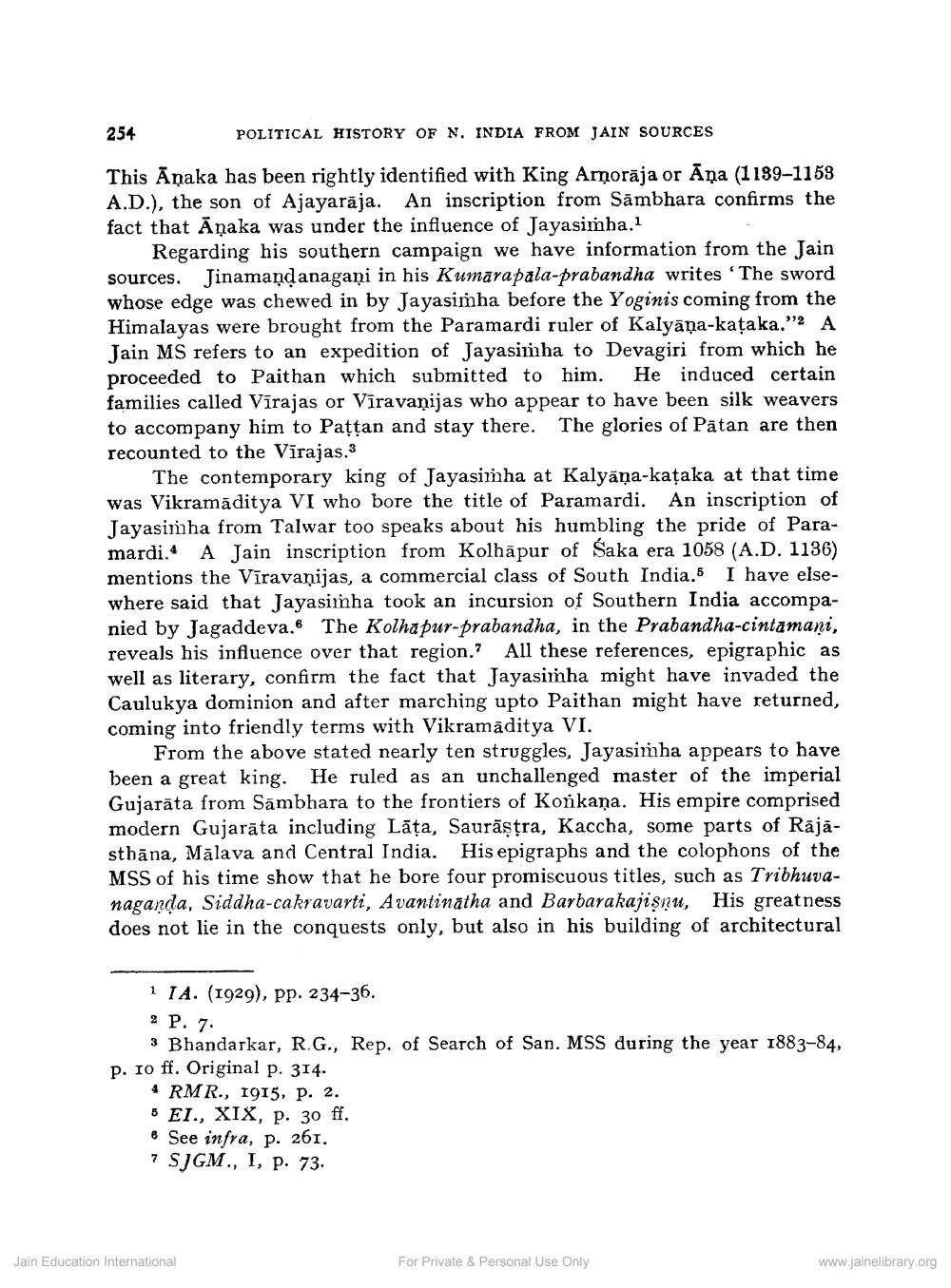________________
254
POLITICAL HISTORY OF N. INDIA FROM JAIN SOURCES
This Āņaka has been rightly identified with King Arnorāja or Āņa (1189-1153 A.D.), the son of Ajayarāja. An inscription from Sāmbhara confirms the fact that Āņaka was under the influence of Jayasimba.1
Regarding his southern campaign we have information from the Jain sources. Jinamaņdanagani in his Kumārapala-prabandha writes 'The sword whose edge was chewed in by Jayasimha before the Yoginis coming from the Himalayas were brought from the Paramardi ruler of Kalyāņa-kataka." A Jain MS refers to an expedition of Jayasimha to Devagiri from which he proceeded to Paithan which submitted to him. He induced certain families called Vīrajas or Vīravanijas who appear to have been silk weavers to accompany him to Pațtan and stay there. The glories of Pātan are then recounted to the Vīrajas.3
The contemporary king of Jayasimha at Kalyāņa-kațaka at that time was Vikramaditya VI who bore the title of Paramardi. An inscription of Jayasimha from Talwar too speaks about his humbling the pride of Paramardi.4 A Jain inscription from Kolhāpur of Saka era 1058 (A.D. 1136) mentions the Vīravaņijas, a commercial class of South India. I have elsewhere said that Jayasimha took an incursion of Southern India accompanied by Jagaddeva. The Kolhapur-prabandha, in the Prabandha-cintamani, reveals his influence over that region. All these references, epigraphic as well as literary, confirm the fact that Jayasimha might have invaded the Caulukya dominion and after marching upto Paithan might have returned, coming into friendly terms with Vikramaditya VI.
From the above stated nearly ten struggles, Jayasimha appears to have been a great king. He ruled as an unchallenged master of the imperial Gujarāta from Sāmbhara to the frontiers of Konkaņa. His empire comprised modern Gujarāta including Lāța, Saurāşțra, Kaccha, some parts of Rajasthāna, Mālava and Central India. His epigraphs and the colophons of the MSS of his time show that he bore four promiscuous titles, such as Tribhuvanaganda, Siddha-cakravarti, Avantinatha and Barbarakajişnu, His greatness does not lie in the conquests only, but also in his building of architectural
VI.
1 1 A. (1929), pp. 234-36. 2 P. 7
3 Bhandarkar, R.G., Rep. of Search of San. MSS during the year 1883-84, p. ro ff. Original p. 314.
4 RMR., 1915, p. 2. 5 EI., XIX, p. 30 ff. & See infra, p. 261. 7 SJGM., I, p. 73.
Jain Education International
For Private & Personal Use Only
www.jainelibrary.org




